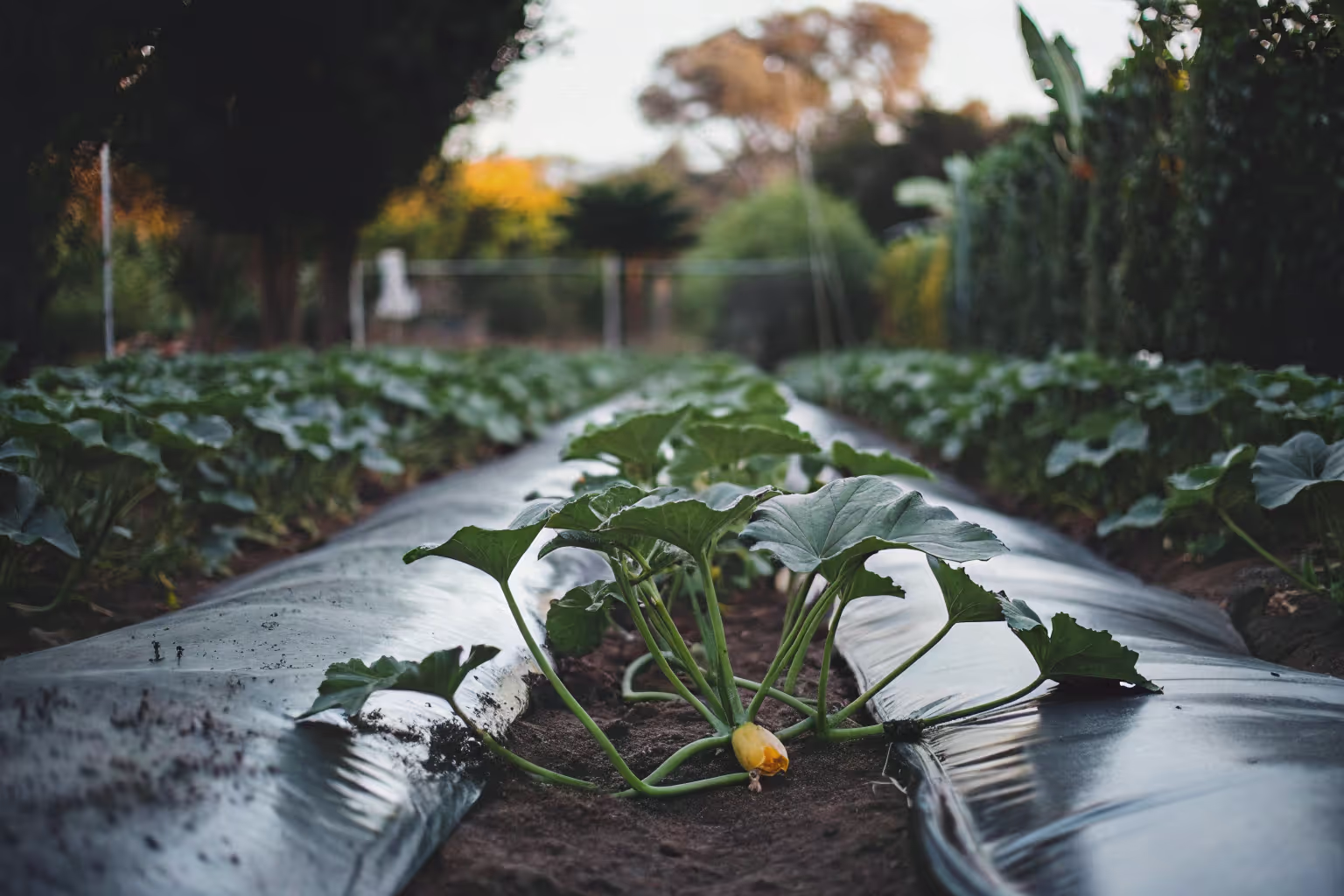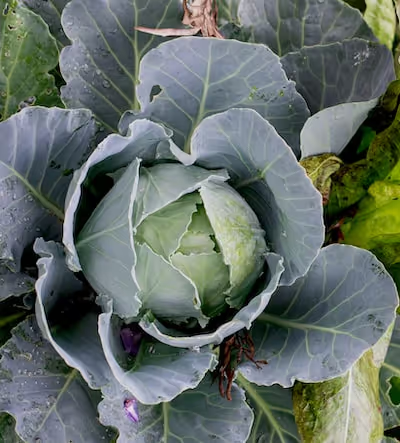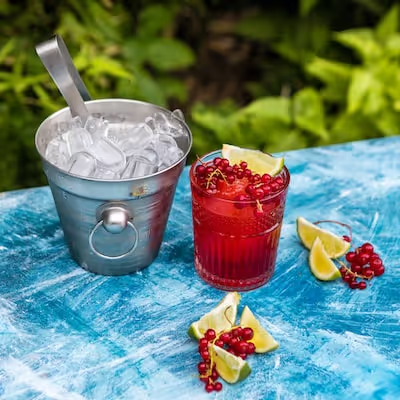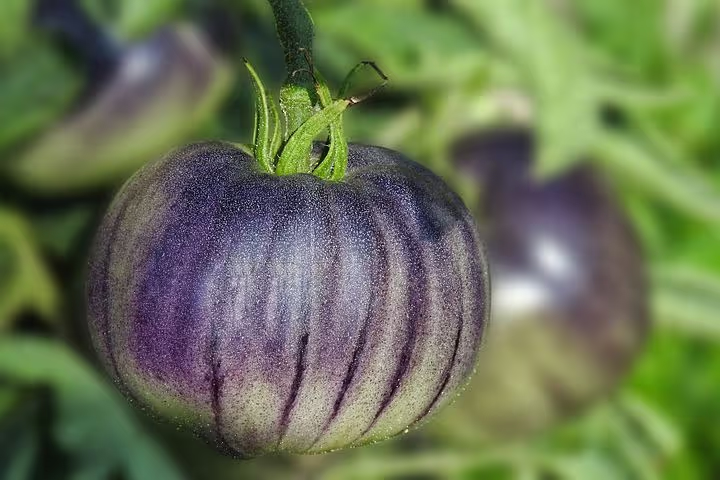Growing Spaghetti Squash: Simple Steps for a Unique Harvest
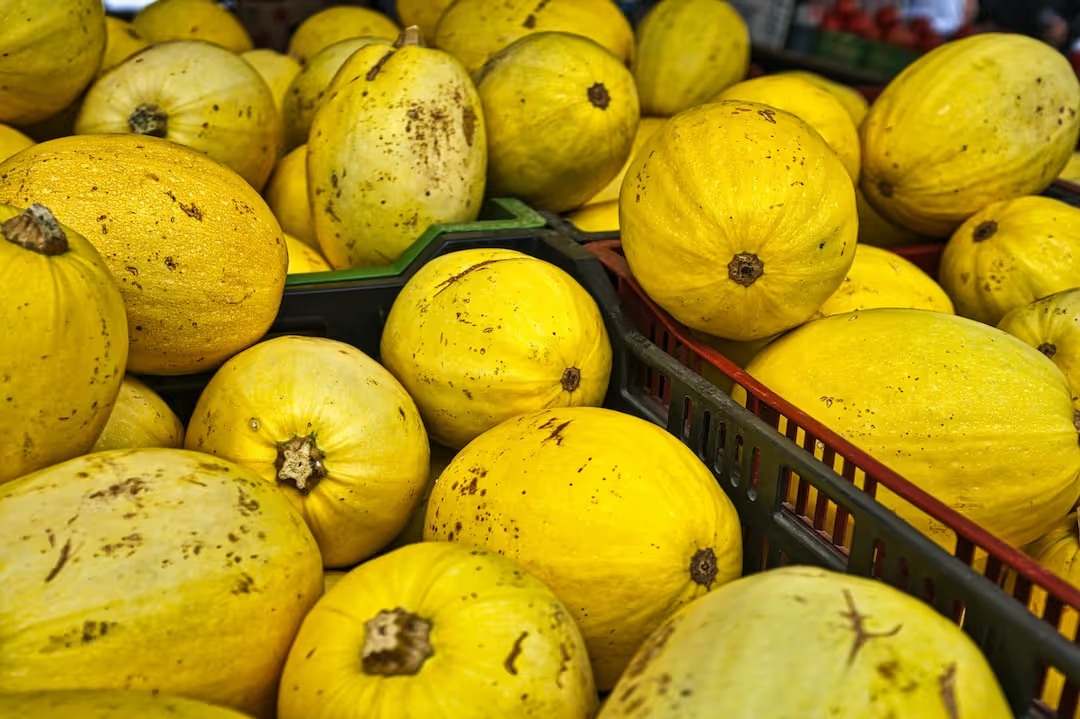
Growing Spaghetti Squash
Growing spaghetti squash rewards gardeners with a hardy, low-maintenance vine whose sunny-yellow fruits yield pasta-like strands perfect for the kitchen. With soil temperatures above 60°F and ample sun, growing spaghetti squash from seed to harvest takes roughly 90 to 100 days. Ready your gardening gloves—here's how to coax this quirky vegetable into flourishing deliciousness.
Cheatsheet: Harvest Spaghetti Squash With Ease
🌱 Variety & Nutrition
High in fiber, vitamin C, low-cal. Spaghetti squash: 4x more vitamin A than standard squash. One plant yields 4–7 fruits.
🪴 Planting Conditions
- Soil: Loose, rich, pH 6–7
- Temp: 60–85°F (16–29°C), frost-free
- Spacing: 3–4 ft (1–1.2 m) apart
- Sun: 6–8 hrs daily
💧 Water & Feeding
- 1–1.5 in (2.5–4 cm) water weekly
- Mulch for moisture & weed control
- Feed every 4 weeks with balanced organic fertilizer
🐝 Pollination
Grow bee-friendly flowers nearby for better yields. Hand-pollinate if fruit sets fail.
🦠 Pest & Disease Defense
- Watch for squash bugs, powdery mildew
- Use floating row covers early
- Rotate crops yearly
🛠️ Tools and Products You'll Need
- High-quality seeds
- Compost or aged manure
- Mulch (straw or wood chips)
- Sharp pruners
- Soaker hose or watering can
- Garden gloves
⏱️ Harvest & Storage
- Harvest at 90–110 days; skin hard, yellow, and cannot be punctured with a fingernail
- Cut with 2 in (5 cm) stem; cure in sun for 7–10 days
- Store up to 3 months at 50–60°F (10–15°C)
- Sow seeds outdoors after last frost, 1 in (2.5 cm) deep, 3–4 ft (1–1.2 m) apart.
- Water consistently; mulch to retain soil moisture.
- Fertilize monthly with organic feed.
- Monitor for pests; use row covers if needed.
- Harvest when skin is hard and fruit turns golden yellow.
- Cure and store in cool, dry conditions.
-
Growing Spaghetti Squash: Simple Steps for a Unique Harvest
My first spaghetti squash patch outgrew the walkway and tried to climb the grill, so I learned fast. The vines roam, the fruit glows straw-gold, and the payoff tastes like a bowl of memory with better texture.
Choose the right cultivar for your space
I treat variety selection like picking cookware. It sets the tone for the whole season.
- Tivoli F1 - compact, reliable set, great for small gardens and large containers.
- Small Wonder - bush habit, early, tidy vines with consistent 2 to 3 lb fruit 0.9 to 1.4 kg.
- Vegetable Spaghetti - classic heirloom, vining, 3 to 5 lb fruit 1.4 to 2.3 kg with rich strands.
- Stripetti - striped skins, sweet flavor, vigorous vines that love a trellis.
Seed packets list days to maturity, plant habit, and disease notes. I buy fresh seed every 2 to 3 years to keep germination high.
Timing is everything
Wait until soil sits at 70 F 21 C at 5 cm depth and all frost risk has passed. Cool soil sulks, then rots seeds.
Direct sow in warm regions. In colder zones, start seed indoors 3 to 4 weeks before last frost and transplant gently after hardening off for 7 to 10 days.
Site and soil that set you up to win
Full sun for 8 to 10 hours per day builds sugars and keeps vines honest. Aim for soil pH 6.0 to 6.8 with steady drainage and plenty of organic matter.
I work in 2 to 3 inches 5 to 7.5 cm of finished compost and a balanced organic fertilizer 4-4-4 at label rates. Heavy clay gets raised beds and coarse mulch.
Planting details that pay off
Sow seeds 1 inch 2.5 cm deep in warm soil. For transplants, disturb roots as little as possible and plant at the same depth as in the pot.
Use hills or stations of 2 to 3 seeds, then thin to the strongest one. Hills warm faster and shed extra water.
Spacing and trellising
Give vining types 3 to 4 feet 0.9 to 1.2 m between plants and 6 to 8 feet 1.8 to 2.4 m between rows. Bush forms can run tighter at 2 to 3 feet 0.6 to 0.9 m.
I train vines vertically on cattle panel or heavy netting and cradle each fruit in fabric slings. Trellising dries leaves, saves space, and keeps skins clean.
Water and feeding without headaches
Target 1 to 1.5 inches 25 to 38 mm of water weekly, deeper during heat spikes. Drip lines and mulch keep foliage dry and disease pressure down.
Side-dress with nitrogen when vines run, then again at first fruit set. Ease up afterward so vines focus on ripening, not making more leaves.
Flowers, pollination, and fruit set
Spaghetti squash makes separate male and female flowers, and bees do the matchmaking. If mornings feel quiet, I hand-pollinate with a soft brush or by rubbing a male flower onto the female stigma.
USDA FoodData Central: “One cup of cooked spaghetti squash has about 42 calories.”
Light fruit set often traces back to low bee activity or cold mornings. Row cover comes off at bloom so pollinators can work.
IPM for pests and diseases
I stack prevention first, then act early with the least-disruptive tools. Here is what stays on my radar.
- Squash vine borer: Plant after peak flight, wrap lower stems with foil or tape, and scout for sawdust-like frass near entry holes. Injecting Bt into the stem can save a plant if caught early.
- Squash bugs: Hand-crush copper eggs on leaf undersides, set out board traps at dusk, and vacuum nymph clusters in the morning.
- Cucumber beetles: Use row cover until bloom, yellow sticky cards at edges, and kaolin clay film to reduce feeding.
- Powdery mildew: Improve airflow with trellising, avoid late overhead watering, and use sulfur or potassium bicarbonate sprays at first signs. I rotate products to prevent resistance.
Healthy soil and steady watering blunt stress that invites problems. I also stagger two plantings 2 to 3 weeks apart to spread risk.
Training and pruning for better fruit
I let one main leader run and train a secondary if space allows. For larger squash, limit each plant to 3 to 5 fruit and tip-prune vines once they have set what you want.
Slide a tile or shingle under each fruit on the ground. It thwarts rot and pillbugs.
Harvest cues that never lie
Color shifts to full straw-gold and the rind resists a firm thumbnail. The stem browns and turns corky, and the ground spot pales.
Cut with 2 inches 5 cm of stem attached. I avoid yanking because ripped stems invite storage rot.
Curing and storage
Air-cure fruit for 7 to 10 days in a warm, dry, shaded spot at roughly 75 to 80 F 24 to 27 C. Then store at 50 to 55 F 10 to 13 C with moderate humidity.
In my pantry, spaghetti squash holds 1 to 3 months. I check weekly and eat any with soft spots first.
Yield math and expectations
Vigorous plants give 3 to 8 squash, depending on variety, weather, and pruning. Trellised vines often finish cleaner and earlier.
Key benchmarks: soil 70 F 21 C to plant, 70 to 100 days to maturity, 1 to 1.5 inches 25 to 38 mm water per week, storage at 50 to 55 F 10 to 13 C.
Container and patio success
Use a 15 to 25 gallon 57 to 95 L container, a compact variety, and a stout trellis. Fill with a high-quality potting mix plus slow-release organic fertilizer and weekly liquid feed once vines run.
Container plants dry fast. I water daily in heat and mulch the surface 2 to 3 cm deep.
Flavor, nutrition, and kitchen moves
I roast halves cut-side down at 400 F 204 C until the shell dents under a thumb, then rake strands with a fork and finish in a skillet with olive oil, garlic, and lemon. The strands drink up sauce like fresh pasta but stay light.
Per USDA data, a cup cooked gives roughly 42 calories, about 10 g carbs, and near 2 g fiber. Salt when hot for best pop.
Buying seeds, starts, and gear
- Fresh seed from reputable vendors with published germ testing and clear DTM ranges.
- Sturdy transplant starts with thick stems and no root circling.
- Heavy-gauge trellis panels, soft fruit slings, drip kits with 0.5 gph emitters, and a basic pH-EC meter.
- Floating row cover 0.5 to 0.9 oz, kaolin clay, sulfur or potassium bicarbonate, and a sharp harvest knife.
I value vendors who disclose seed treatments and disease resistance. Clear labels save headaches later.
FAQ I get on Growing Spaghetti Squash
Can it cross with zucchini and ruin flavor? Crosses affect next year’s seed, not this year’s fruit.
Can I eat a fruit that tastes bitter? No, discard it, since high cucurbitacins can cause illness.
Do I have to cure spaghetti squash? A short cure toughens rinds and evens moisture, which helps storage.
Why do tiny fruit drop? Usually weak pollination or heat stress during early set.
Common mistakes to avoid
- Planting into cold soil, which delays emergence and invites rot.
- Keeping row cover on during bloom, which prevents pollination.
- Overfeeding nitrogen after fruit set, which fuels vines over flavor.
- Overhead watering late day, which fuels mildew.
- Storing squash in the refrigerator, which shortens shelf life.
A quick calendar
- Spring: Start seed indoors 3 to 4 weeks before last frost. Warm beds with black plastic if soil lags.
- Early summer: Transplant or direct sow at 70 F 21 C soil. Install trellis and drip the same day.
- Midseason: Side-dress at vine run and first set. Scout twice weekly for borers and bugs.
- Late season: Prune to target fruit count. Harvest at full color with corky stems.
- Post-harvest: Cure 7 to 10 days, store cool, and cook the prettiest one first.
Smart comparisons if space is tight
- Spaghetti squash vs. butternut: Spaghetti trades starch for strands, stores for a shorter window, and finishes earlier in cool summers.
- Spaghetti squash vs. zucchini: Zucchini sprints and keeps producing, but spaghetti delivers a tidy, harvest-all-at-once payoff and better winter keeping.
- Bush types vs. vining types: Bush eases training and container use, while vines give higher yield per plant in open ground.
Sources I trust for Growing Spaghetti Squash
USDA FoodData Central for nutrition numbers and commodity data. University of Minnesota Extension, Cornell Cooperative Extension, and University of California IPM for pH ranges, pollination needs, and pest timing.
Seed company tech sheets from Johnny’s Selected Seeds and university vegetable guides for cultivar days to maturity, plant spacing, and trellising loads. These references align with what I see in the field, which keeps my notes honest.
Frequently Asked Questions about Growing Spaghetti Squash
When should spaghetti squash seeds go into the ground?
For best results, start spaghetti squash seeds outdoors once frost danger has passed and soil temperatures reach at least 60°F (16°C). In cooler climates with shorter growing seasons, start seeds indoors 4–6 weeks before the final spring frost date, ensuring seedlings have established healthy root systems prior to transplant.
How much sunlight does spaghetti squash require?
Spaghetti squash plants thrive under full direct sunlight—ideally 6–8 hours daily—to ensure healthy foliage growth and prolific fruit production. Select a planting area free from shadows cast by nearby structures or tall plants for optimal development.
What soil conditions best suit spaghetti squash plants?
Rich, well-draining soil enriched with organic compost creates ideal growing conditions. Target a soil pH between 6.0 and 6.8, which encourages the plants' nutrient uptake and vigorous growth. Adding compost or aged manure prior to planting encourages healthy fruit yield.
How much water does a spaghetti squash plant need weekly?
Provide spaghetti squash plants with approximately 1 to 2 inches (2.5 to 5 cm) of water per week. Water deeply and evenly around the plant's base, ensuring moisture penetrates about 6 inches (15 cm) into the soil. Using mulch helps retain soil moisture and prevents rapid evaporation during hotter months.
Is vertical growing suitable for spaghetti squash plants?
Yes, spaghetti squash plants respond well to trellising or vertical growing methods. A sturdy trellis or vertical support structure conserves space in smaller gardens and promotes better air circulation. Use fabric slings or soft materials to gently support hanging squash as they grow heavier and near maturity.
How do I know when spaghetti squash is ready to harvest?
Maturity occurs roughly 90 to 100 days after planting. Ripe spaghetti squash fruits showcase a firm, vibrant yellow or ivory rind resistant to fingernail puncture and a dried-out, brownish stem. Harvesting before frost arrives preserves fruit quality and storage potential.
What's the proper storage practice for spaghetti squash?
After harvesting, cure spaghetti squash by placing them in a dry, warm area (around 80–85°F or 26–29°C) for 10–14 days to harden their rinds and extend storage life. After curing, store squash in a cool environment (50–55°F or 10–13°C), ideally low in humidity and away from direct sunlight, for optimal shelf life lasting 1–3 months.
Growing Spaghetti Squash rewards patience and a bit of grit. Start with rich soil, give them room, and respect their thirst for sun and water. Keep an eye out for pests, but don’t baby them—these vines want to run wild. When the fruits turn golden and the rind resists a fingernail, you’re ready for harvest. Serve up the strands and you’ll see: this isn’t just another squash. If you’re hungry for more homegrown flavor, check out tips on growing winter squash or try your hand at zucchini for a steady summer crop. In the end, a little dirt under your nails and a home-cooked meal—that’s the real payoff.
The Homesteader's Take: Self-Sufficient Spaghetti Squash Gardening
Preserving the Harvest
- Curing Squash: Sun cure on dry ground at 80–85°F (27–30°C) for 7–10 days to harden skins for extended storage.
- Root Cellar Storage: Store cured fruit at 50–60°F (10–15°C), up to 3–4 months.
- Freezing Flesh: Cook spaghetti squash, remove strands, and freeze portions up to 12 months at 0°F (-18°C).
Sustaining Seed Stock
- Save True Seeds: Select mature squash, scoop seeds, ferment pulp 3 days in water, rinse, air-dry fully before storing in airtight jars.
- Seed Lifespan: Proper seed saving provides reliable germination 4–6 years.
Nutritional Yield for Self-Reliance
Each serving (1 cup cooked/155g) supplies fiber, vitamins C & B6, manganese, potassium; supporting balanced diets and food independence.
Natural Pest Prevention Methods
- Companion Planting: Marigolds deter pests; radishes nearby lure away squash bugs.
- Floating Row Covers: Use inexpensive fabric tunnels early-season to deter cucumber beetles and vine borers.
- Neem Oil Applications: Apply neem directly every 1–2 weeks or after rain to repel pests naturally.
Soil Regeneration Practices
- Crop Rotation: Wait 3–4 years before replanting squash in same bed to prevent diseases and nutrient depletion.
- Nutrient Restoration: Amend soil annually with homemade compost or animal manure to replenish nutrients depleted by squash.
Find out which plants will thrive in your garden!
Answer a few fun questions and get custom plant recommendations perfect for your space. Let’s grow something amazing together!

start your season
